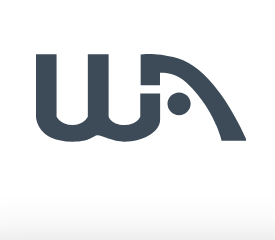Why Wealthy Affiliate is Your Gateway to Entrepreneurial Freedom
In a world where opportunities for online entrepreneurship are as vast as the internet itself, finding the right platform to launch and grow your business is crucial. Enter Wealthy Affiliate, the top-rated home-based business platform that stands out as a beacon for aspiring entrepreneurs. Let’s dive into why Wealthy Affiliate is the ultimate ally in your journey to online business success.
The Wealthy Affiliate Advantage
Imagine having a roadmap to navigate the complex world of affiliate marketing, surrounded by a community that shares your vision of success. Wealthy Affiliate isn’t just another name in the list of top 10 home-based business ideas; it’s a comprehensive ecosystem designed to foster growth and innovation.
The platform offers an unparalleled affiliate marketing training review system, making it a top-rated home-based business opportunity. It’s a place where you can learn, implement, and thrive, with courses that cover everything from the basics to advanced strategies. This is the kind of resource that transforms curious beginners into seasoned marketers, seamlessly blending education with real-world application.
Why Wealthy Affiliate Stands Out
What sets Wealthy Affiliate apart from other top-rated home-based businesses? For starters, it’s the community. Picture a vibrant network of like-minded individuals who are as invested in your success as you are. This isn’t just about learning; it’s about creating and sharing wealth through collaboration and support. It’s where the spirit of Ken Evoy’s entrepreneurial empowerment truly comes to life, offering real home-based business opportunities that are both legitimate and profitable.
Wealthy Affiliate is also renowned for its transparency and integrity—traits that resonate with anyone weary of scams and false promises. Here, the focus is on building sustainable, long-term success through proven strategies and ethical practices. It’s no wonder Wealthy Affiliate is considered among the best-rated home-based businesses.
Comprehensive Training for Every Stage
Whether you’re new to the concept of affiliate marketing or a seasoned pro looking to refine your skills, Wealthy Affiliate provides top-notch training tailored to your level. The platform covers everything from niche selection and keyword research to content creation and SEO optimization. This comprehensive approach ensures that all members, regardless of experience, can access the tools needed for success.
The training modules are constantly updated to reflect the latest industry trends, making Wealthy Affiliate not just a top 10 home-based business but a forward-thinking leader in online education. This commitment to excellence is what makes it a top-rated home-based business opportunity that continues to attract entrepreneurs worldwide.
Empowering Your Entrepreneurial Spirit
Ken Evoy once said that true empowerment comes from providing the tools and knowledge necessary to achieve independence. At Wealthy Affiliate, this philosophy is at the core of everything they do. By offering a platform that encourages creativity, innovation, and persistence, they empower members to pursue their dreams of financial freedom.
Wealthy Affiliate isn’t just about making money online; it’s about creating a lifestyle that aligns with your values and aspirations. It’s about becoming a wealthy marketer in every sense of the word—rich in knowledge, connections, and opportunities.
Real and Profitable Home-Based Business Opportunities
Navigating the landscape of home-based business ideas can be daunting, but Wealthy Affiliate simplifies the process by offering real opportunities that are both profitable and sustainable. From the moment you join, you have access to a treasure trove of resources and insights that guide you toward success.
Whether you’re exploring the top 10 home-based business opportunities or looking for the top 20 home-based businesses to model, Wealthy Affiliate provides the clarity and direction needed to make informed decisions. It’s about finding the path that suits your unique skills and interests, empowering you to build a business that thrives on your terms.
A Community of Wealthy Marketers
Joining Wealthy Affiliate means becoming part of a community that celebrates diversity, creativity, and mutual success. Here, you’re not just another member; you’re a wealthy marketer, part of a collective that values knowledge sharing and continuous improvement.
This sense of belonging is what makes Wealthy Affiliate one of the great home-based businesses, offering an environment where members can learn from each other and grow together. It’s a place where success is shared, and every triumph is celebrated.
The Final Word
In the quest to identify the top-rated home-based business, Wealthy Affiliate emerges as a clear frontrunner. With its robust training, supportive community, and proven track record, it offers a unique blend of resources and opportunities that empower entrepreneurs to achieve their dreams. Whether you’re just starting or looking to elevate your current business, Wealthy Affiliate is the go-to platform for online business success.
Unlock the potential of your online business with Wealthy Affiliate today, and join the ranks of successful entrepreneurs who have turned their ambitions into reality. Embrace the journey, and discover why Wealthy Affiliate is not just a platform, but a partner in your path to entrepreneurial freedom.






